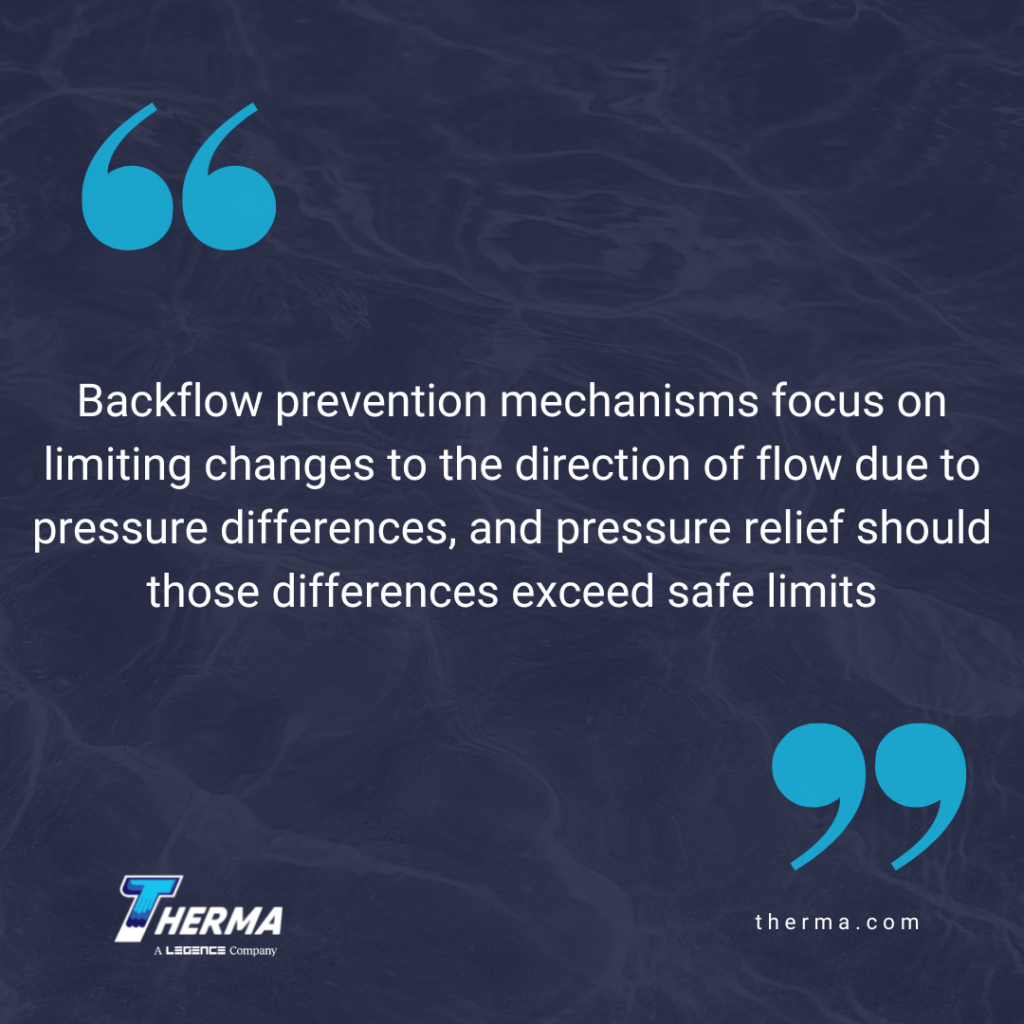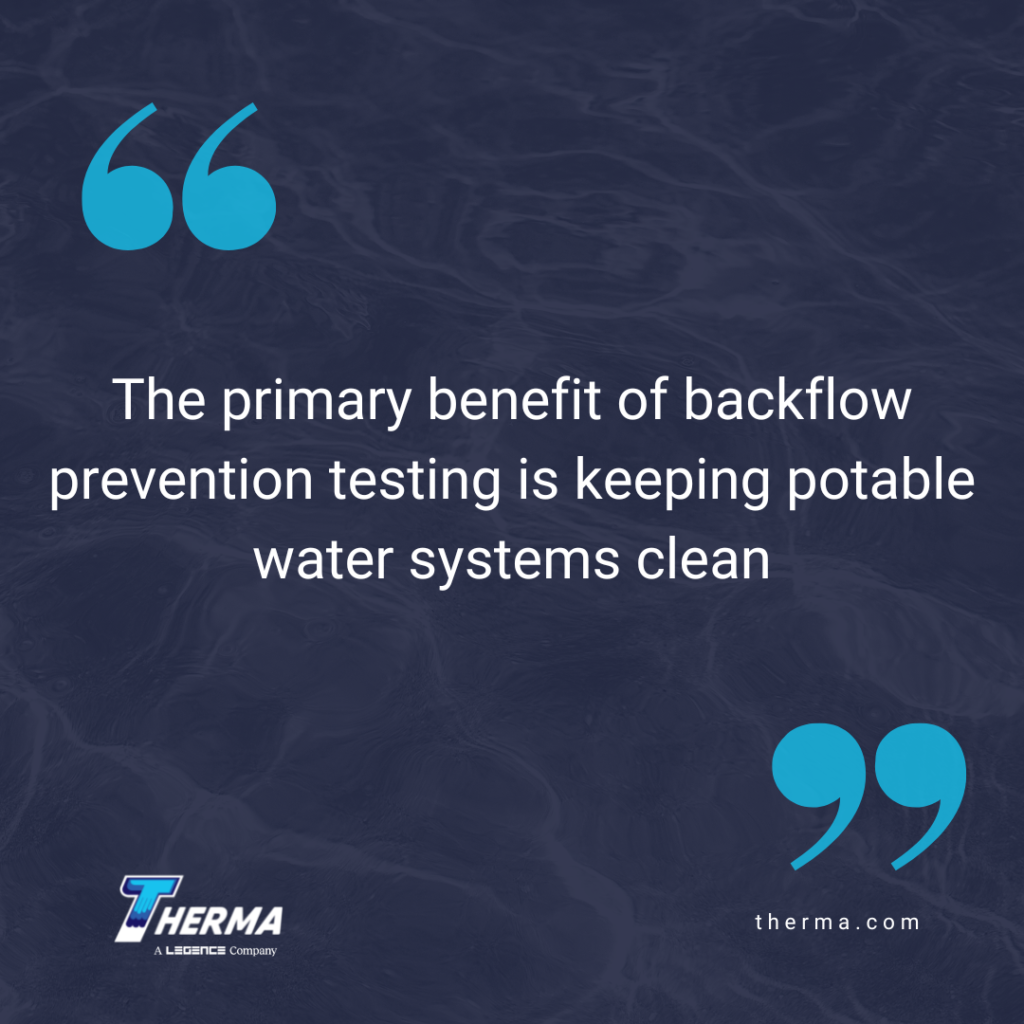by Patti Dees
Mechanical backflow prevention devices protect municipal water systems from potential contamination. However, wear and debris can limit a device’s effectiveness. Backflow testing ensures the devices can keep contaminated liquids from flowing back into local clean water systems.
General Overview: Backflow Prevention
What is backflow?
To keep the water that flows to consumers clean, water needs to flow in one direction – from the clean water source through the cross-connection to the service point. Backflow is water that flows from a service point – a consumer building, irrigation, or fire system – to the municipal water system. Backflow has the potential to introduce hazards such as chemicals, medical waste, or debris into the local water supply. Consumers downstream would then be exposed to those hazards.
How is it prevented?
Preventing backflow requires effort from both the consumer and the water supplier. Strategies include limiting the number of cross-connections, tracking potentially hazardous connections, as well as the installation, maintenance, and testing of backflow prevention devices and assemblies.
The bulk of the prevention strategy that falls to customers focuses on the prevention mechanisms placed at the cross-connection. Building, plumbing, and fire codes dictate the type of valve assemblies required for certain types of consumers and connections. For instance, a fire protection system would likely use a Reduced Pressure Zone Assembly (RPZA) which protects against back siphoning and backpressure.
Backflow Prevention Mechanisms and Testing
Backflow prevention mechanisms focus on limiting changes to the direction of flow due to pressure differences, and pressure relief should those differences exceed safe limits. Check valves, air inlet valves, and relief valves are used in specific combinations depending on the type of backflow prevention needed. Some assemblies also include test cocks, however not all do.
Monitoring valves for age-related wear and tear requires annual testing. However, testing is also required whenever there is a chance for debris or misalignment. New installs, repairs, and relocating prevention assemblies all require testing before the work is considered complete to ensure seals and valve seats align and are not blocked by debris.
Many areas require that testing be completed by certified professionals. While it is possible for individuals to test their own, it requires calibrated equipment and different testing protocols for different types of prevention assemblies.

Water service must be turned off during testing. Even though there is water left in the lines, it cannot be used until testing is complete so that the water pressure is not reduced to zero.
For customers who require constant water service, such as medical facilities, having multiple prevention devices in parallel and backflow prevention at fixtures can allow testing to occur without complete water shut off.
Once the water is off, testers identify the type of valves in the assembly and its overall function and direction of water flow. Specific tests, procedures, and gauge types are required depending on the type of backflow mechanism and the orientation of the valve components. If test cocks are not part of the assembly, the tester will number and attach them where required.
Tester certification ensures the individual knows when to follow a certain procedure and how to interpret the results. They can make small repairs or identify valve assemblies that need more extensive work.
The primary benefit of backflow prevention testing is keeping potable water systems clean. Clean water is everyone’s responsibility and serious business. Backflow testing helps customers meet any building, fire, or plumbing codes that are enforced in the service area. Contact Therma for ways to make testing part of a building’s plumbing maintenance plan.
Patti draws on her background as a chemical engineer to share information with readers on technology, manufacturing, and construction.
Sources
American Backflow Prevention Association – What Does it Mean to You?
American Backflow Prevention Association – Frequently Asked Questions
Mypdh.engineer – Testing Procedures for Backflow Preventers
DoItYourself.com – How to Test a Backflow Preventer








